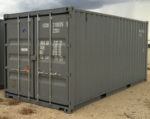
Alex Mills
By Alex Mills
The key strategies for oil and natural gas producers in the U.S. for the remainder of 2016 are to cut costs even further and increase efficiency to the max, according to a study released in the August issue of World Oil magazine.
Low commodity prices and an uncertain political future were cited by Editor Kurt Abraham and Technical Editor Craig Fleming as primary reasons for the dismal outlook for drilling and capital spending.
Abraham and Fleming even cited 2016 as being the second worst year for drilling beaten only by 1933, when a flood of crude oil from East Texas drove oil prices as low as a nickel a barrel.
“Thus, it is our belief that the U.S. exploration and production market will endure an historically low level of drilling for 2016, with only 14,430 wells forecast,” they stated. “To put this total in perspective, it is only the second year since 1934 in which the U.S. has drilled less than 20,00 wells (in 1999, just 18,039 were drilled). To put it another way, this will be the lowest annual well count since 1933, when only 11,700 wells were drilled.”
Texas drilling accounted for 2,926 wells during the first half of 2016, and it is projected to total 6,111 wells (42 percent of North America’s total).
The study noted that Evercore predicts a dramatic reduction in capital expenditures in North America (NAM). “The report forecasts that 2016 NAM budgets will fall 41% to $87,933 billion from $148,325 billion last year.”
Capital expenditures by independent onshore operators are expected to drop 53%, year-to-year. The smaller companies account for 23% and 19% of NAM spending in 2015 and 2016, respectively.
In the shale plays, Evercore expects spending to remain low, as incremental drilling will occur only in the most productive regions first.
What’s the magic number?
“About 37% of NAM respondents said they would increase spending if prices rise enough to improve projected economics,” the report stated. “Aproximately 17% of the companies surveyed by Evercore indicate a $50 per barrel price is necessary to stimulate incremental spending, while oil in the $55-$60 per barrel range is required for 41% of respondents.
“For natural gas, 33% said they would increase 2016 spending if prices hit $2.50-$3 per thousand cubic feet (Mcf),” the report continued. “However, if gas prices climb above $3 per Mcf, 78% of respondents would increase capital expenditures 10% versus a smaller 53% of respondent to the oil question.”
Obviously, price is only one part of the equation. Drilling and production costs are key factors, too. Companies have “tried to stop the financial hemorrhaging by conducting personnel layoffs aplenty, as well as selling oil and gas properties.”
As we have seen in the previous crashes of 1986 and 1999, the pain of it all results in more efficient companies with leaner balance sheets.
“As the shock of upstream downsizing abates, in reaction to an historically low drilling year, producers and service companies focus on improving efficiencies to lower break-even cost to regain profitability,” Abraham and Fleming stated.
Alex Mills is President of the Texas Alliance of Energy Producers. The opinions expressed are solely of the author.


















Speak Your Mind